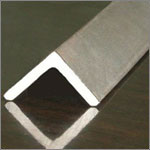This is an austenitic chromium-nickel alloy which practically means that it has a very high corrosion resistance. What is 3material? It has excellent drawing properties and very good formability, while it is also highly corrosion-resistant.

Typical uses of 3stainless steel include sinks, kitchen equipment such as pans, tubing and much more. Most common stainless steel SAE 3stainless steel is the most common stainless steel. The steel contains both chromium (between and ) and nickel (between and 1 ) metals as the main non- iron constituents.
It is an austenitic stainless steel. The combination with strength and low maintenance make them a great fit for a wide range of applications. They are used everywhere from buildings and constructions to medical and food equipment.
AISI designation for this material. Additionally, the British Standard (BS) designation is 304S15. Cr – Ni – 10. Austenitic Cr-Ni stainless steel. Better corrosion resistance than Type 302.
High ductility, excellent drawing, forming, and spinning properties. Essentially non-magnetic, becomes slightly magnetic when cold worked. Low carbon content means less carbide precipitation in the heat-affected zone during welding and a lower susceptibility to intergranular corrosion. Type 3is the most versatile and widely used stainless steel. Type 3stainless steel is an austenitic grade that can be severely deep drawn.

Alloy 3is a general purpose austenitic stainless steel with a face centered cubic structure. The lower Carbon content compared with alloy 3gives better corrosion resistance in welded structures. A wonderful infographic about these two important materials, made by EngraveItHouston. L (USA, AISI , ASTM, UNS) - European (EU, EN) and wordwide Steel equivalent grades These comparison table is only intended as an indication of the closest khown equivalent grades.
AISI” is short for American Iron and Steel Institute, In addition, SUS3is a Japanese stainless steel, and the equivalent is AISI 304. Close Analogs: AISI Type 410. In appearance, they both look very similar and it is more than likely that you won’t be able to tell the difference between them just by looking at them. This article will introduce the differences between 3and 304L stainless steel ( 3vs 304L) from chemical composition, mechanical properties, corrosion resistance and weldability. SAE grades were developed alongside AISI steel grades, which caused significant overlap in these two near-interchangeable standards.
The most common SAE stainless steel grades are 30 3, and 3stainless steel. It has a higher thermal stability against high temperature, which makes it the ideal material for the construction of the combustion chambers of the indirect flame air heater CombiTERM. SS 3is a stainless steel with applications ranging from the manufacturing of chemical equipment, kitchen and cooking utensils and equipment, to surgical tools and textile dyeing equipment. The metal is characterized by its corrosion resistance, especially in cases of oxidation and salt water. These are NOT specifications, but steel grade composition ranges only.
Contact Acerinox Headquarters. The simple answer is 3contains chromium and nickel while 3contains chromium, nickel and molybdenum. The molybdenum is added to help resist corrosion to chlorides (like sea water and de-icing salts). As well as offering good resistance to corrosion and ease when welding, this formula has excellent ductility and can be used in an extremely wide range of applications including used surgical instruments and chemical plant equipment.

The grade is a versatile, general purpose stainless steel with good resistance to atmospheric corrosion, to many organic and inorganic chemicals, to oxidizing acids like nitric aci caustic solutions at moderate temperatures and to food and beverages. The drawing process ensures an enhanced surface, higher strength and closer tolerances. Stainless steel round bar, drawn 1. L is an even lower carbon version of 3stainless steel and can be used in more corrosive environments such as salt water and chemical. It can be used in an as welded condition, while 3must be annealed.
There is no major difference except that the two grades are referred in Japanese and American grades. Some people although try to explain the difference in terms of mechanical properties. It can be easily welded and processed by standard shop fabrication practices.
Žádné komentáře:
Okomentovat
Poznámka: Komentáře mohou přidávat pouze členové tohoto blogu.